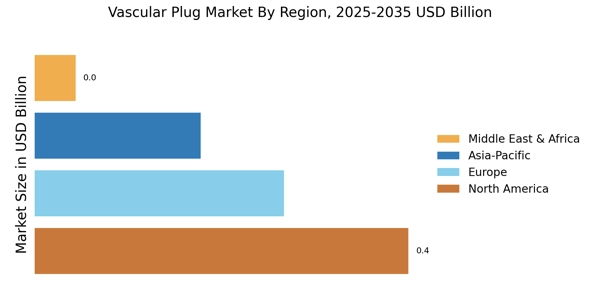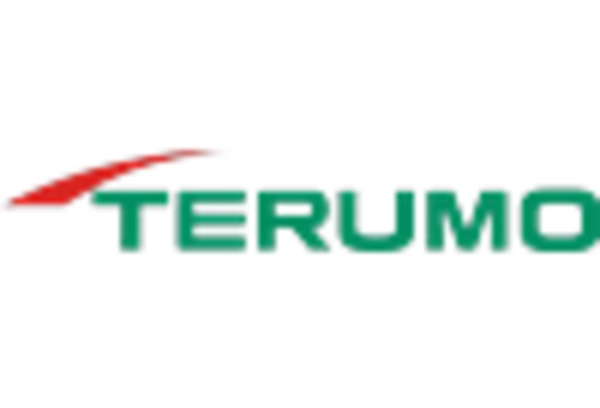Regulatory Support and Approval Processes
Regulatory support plays a crucial role in shaping the Vascular Plug Market. Streamlined approval processes for new devices can accelerate market entry, fostering innovation and competition. Regulatory bodies are increasingly recognizing the importance of vascular plugs in treating various conditions, leading to more favorable policies and guidelines. This supportive environment encourages manufacturers to invest in research and development, resulting in a wider array of products available to healthcare providers. As regulatory frameworks evolve, they are likely to enhance the credibility and safety of vascular plugs, further driving their adoption in clinical settings. The Vascular Plug Market stands to benefit from these developments, as regulatory support can significantly influence market dynamics and growth trajectories.
Increasing Prevalence of Vascular Diseases
The rising incidence of vascular diseases, such as peripheral artery disease and varicose veins, is a primary driver for the Vascular Plug Market. As populations age, the prevalence of these conditions is expected to escalate, leading to a higher demand for effective treatment options. According to recent data, vascular diseases affect millions worldwide, prompting healthcare providers to seek innovative solutions. This trend is likely to stimulate growth in the vascular plug segment, as these devices are essential for occlusion procedures. The increasing awareness of vascular health and the need for timely interventions further contribute to the market's expansion. Consequently, the Vascular Plug Market is poised for significant growth as healthcare systems adapt to meet the rising demand for vascular interventions.
Technological Innovations in Device Design
Technological advancements in the design and manufacturing of vascular plugs are transforming the Vascular Plug Market. Innovations such as bioresorbable materials and advanced delivery systems enhance the efficacy and safety of these devices. For instance, the development of plugs that can dissolve over time reduces the need for additional surgical interventions, appealing to both patients and healthcare providers. Furthermore, the integration of imaging technologies allows for more precise placement of vascular plugs, improving patient outcomes. As these technologies continue to evolve, they are likely to attract investment and research, fostering a competitive landscape within the Vascular Plug Market. This ongoing innovation is expected to drive market growth as healthcare professionals increasingly adopt these advanced solutions.
Growing Investment in Healthcare Infrastructure
Investment in healthcare infrastructure is a vital driver for the Vascular Plug Market. As countries enhance their healthcare systems, the demand for advanced medical devices, including vascular plugs, is expected to rise. Improved healthcare facilities and increased access to medical services facilitate the adoption of innovative treatment options. Furthermore, government initiatives aimed at improving healthcare access and quality are likely to boost the market for vascular plugs. Data suggests that healthcare spending is on the rise, with a focus on enhancing surgical capabilities and patient care. This trend indicates a promising outlook for the Vascular Plug Market, as investments in healthcare infrastructure create a conducive environment for the growth of vascular occlusion devices.
Rising Preference for Minimally Invasive Procedures
The growing preference for minimally invasive procedures is significantly influencing the Vascular Plug Market. Patients and healthcare providers alike favor these techniques due to their associated benefits, including reduced recovery times and lower risk of complications. As a result, vascular plugs, which are integral to many minimally invasive interventions, are witnessing increased demand. Market data indicates that the minimally invasive surgery segment is projected to grow substantially, further propelling the need for effective vascular occlusion devices. This shift in surgical practices is likely to enhance the adoption of vascular plugs, as they align with the trend towards less invasive treatment options. Consequently, the Vascular Plug Market is expected to thrive as it adapts to the evolving preferences of both patients and healthcare professionals.


















Leave a Comment